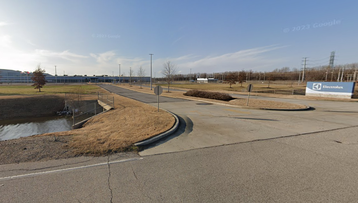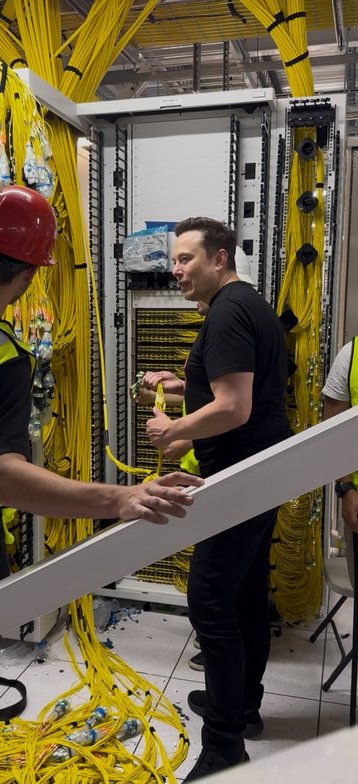Memphis residents have called for a public review of xAI’s plan to build a “gigafactory of compute” in the city, claiming it will put too much strain on the power grid and that citizens will be subsidizing Elon Musk’s company to the tune of millions of dollars.
In a letter to state grid operator the Tennessee Valley Authority (TVA), non-profit environmental advocacy group the Southern Environmental Law Center (SELC) raised a series of concerns about the deal struck by power company Memphis Light, Gas & Water (MLGW) with xAI.
xAI’s ‘jaw-dropping’ power requirements
xAI is building the data center on an industrial park near the Mississippi River in southwest Memphis, with founder Musk dubbing the site the “gigafactory of compute” and proclaiming it will eventually be home to the world's most powerful supercomputer.
Claiming to be speaking on behalf of community groups and residents of Memphis, many of whom will be “directly affected by xAI’s operation and its harmful local consequences,” the SELC letter said MLGW’s decision to grant 150MW of power to xAI should be reviewed. The energy company struck a deal with Musk’s outfit earlier this year, and has applied for the additional grid capacity from TVA.
The letter said: “The xAI facility is demanding a jaw-dropping 150 MW of firm power by the end of 2024. To put that demand in perspective, 150 MW is enough electricity to power 100,000 homes.
“The xAI facility would become MLGW’s largest electricity customer, siphoning five percent of MLGW’s total daily load to power its operations.”
SELC said that the Memphis grid already has supply issues, pointing out that TVA proposed building additional natural gas-powered turbines for the region last October because it said it was unable to meet demand. These would supply an additional 200MW.
“Overcommitting to industrial load, as MLGW and xAI have requested, could have serious and even life-threatening consequences for residential customers in Memphis, contrary to the purpose of the TVA Act and the board policy,” the letter said. “When TVA cannot meet peak demand, families go without power during increasingly severe hot and cold weather.”
Elon Musk: Talking in Memphis
xAI announced plans for the data center in June, with Ted Townsend, president of the Greater Memphis Chamber, trumpeting the deal as the “largest multi-billion dollar investment in the city of Memphis’s history.”
Musk has been talking up the impact of the data center in a characteristically bombastic fashion, stating in June that he planned to have the facility running at full capacity by Fall 2025. "My vision is to build the world’s largest and most powerful supercomputer, and I’m willing to put it in Memphis," the billionaire said.
The data center will be housed in a 750,000 sq ft (69,677 sqm) former Electrolux plant in the Boxtown area of South Memphis, which closed in 2022. It will be home to up 100,000 Nvidia H100 GPUs for training and running the next generation of xAI’s large language model, Grok, with a second cluster of 300,000 B100 GPUs scheduled to come online next year.
It went live on July 22, though quite how many GPUs are available at the site initially is unclear. Chip industry analyst firm SemiAnalysis estimates that xAI has a total of 32,000 GPUs at its disposal, with more set to be delivered later in the year. But this did not stop Musk from proclaiming that the data center is already “a significant advantage in training the world’s most powerful AI by every metric by December this year” when he visited the site last month.
xAI’s plan for Memphis requires proper review
Currently, the data center only has 8MW of power available from the grid, but xAI appears to have temporarily solved this problem by drafting in 14 mobile generators from Voltagrid, each of which is capable of providing 2.5MW, giving it an additional 35MW.
The longer-term solution for the data center’s power needs is for MLGW to upgrade the site's capacity to 50MW in a project that will cost taxpayers $760,000, while xAI is pledging to spend $24 million on a new substation providing an additional 150MW. MLGW CEO Doug McGowen said the company believes it can complete this project more quickly and cheaply than MLGW.
xAI is set to receive monthly rebates from the utility company until its costs are recouped and MLGW would then take ownership of the substation. However, in its letter, SELC said such a deal should not have been agreed without the consent of the city council. DCD has previously reported that Memphis city councilors had complained that they had been left in the dark about the details of the scheme.
The SELC letter said: “It seems that over the next few years, ordinary MLGW ratepayers will be subsidizing millions of dollars in infrastructure investments required to serve xAI, both directly and through bill credits to xAI.”
SELC said it was “shocked” to learn that despite this “apparent massive commitment of ratepayer funds to subsidize xAI’s infrastructure needs, neither the council nor the MLGW board was aware of the xAI project until it was announced on June 5.”
The letter calls for a ”proper review by the MLGW board and city council,” which it says is “essential because MLGW faces significant operational constraints that directly affect the Memphis coalition’s members’ access to electricity.”
It added: ”MLGW must give the MLGW board and city council their charter-given right to evaluate whether it is in the best interest of MLGW ratepayers to subsidize millions of dollars of infrastructure investment in xAI over the next two years, while at the same time struggling to keep the lights on and provide accurate billing statements to residential customers.
”The TVA board should not consider the pending request until MLGW obtains required local approvals.”





